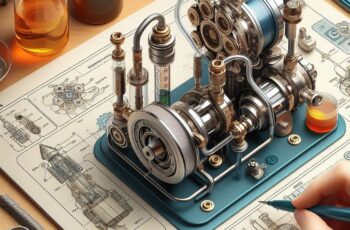Introduction
When it comes to medical equipment, precision and hygiene are non-negotiable. A peristaltic pump is one such device that plays a pivotal role in fluid management across a variety of healthcare applications. This article explores what peristaltic pumps are, their advantages, and their essential role in the medical field.
What is a Peristaltic Pump?
Basic Working Principle
A peristaltic pump is a positive displacement pump that uses a rotating mechanism to compress flexible tubing, propelling fluids through the system. This mimics the peristaltic motion of biological systems, like how food is moved through the oesophagus.
Unique Features of Peristaltic Pumps
The standout feature of these pumps is their non-contact design. The fluid only touches the inner surface of the tubing, which ensures sterility and reduces the risk of contamination.
Role of Peristaltic Pumps in Medical Applications
Importance of Precision and Hygiene
In medicine, even a slight deviation in fluid delivery can have significant consequences. Peristaltic pumps ensure accurate and sterile transfer of fluids, making them ideal for sensitive medical tasks.
Key Medical Applications
Drug Delivery Systems
Peristaltic pumps are widely used in controlled drug delivery devices, ensuring precise dosages for patients over extended periods.
Dialysis Machines
In dialysis, these pumps handle the transfer of blood and dialysate solutions, maintaining sterility and precise flow rates.
IV Therapy and Fluid Management
Intravenous (IV) therapy often relies on peristaltic pumps for accurate administration of fluids, nutrients, or medications.
Blood Transfusion Systems
For blood transfusions, peristaltic pumps maintain gentle, controlled flow to protect the integrity of blood cells.
Advantages of Peristaltic Pumps in Healthcare
Non-Contamination Design
The fluid never comes into contact with pump components, reducing contamination risks and ensuring sterility.
High Accuracy in Fluid Delivery
Peristaltic pumps excel in delivering precise amounts of fluid, a critical requirement in medical applications.
Ease of Maintenance
With fewer moving parts and simple tubing replacement, these pumps are easy to maintain and clean.
Flexibility for Various Fluids
Whether it’s saline, blood, or viscous medication, peristaltic pumps can handle a wide range of fluids without difficulty.
Key Features for Medical Use
Materials Used in Tubing
Medical-grade tubing is typically made from silicone or thermoplastics, ensuring biocompatibility and durability.
Compact and Lightweight Design
Modern peristaltic pumps are compact and portable, ideal for bedside or home-based healthcare setups.
Compatibility with Sterile Environments
The design of peristaltic pumps makes them suitable for use in clean rooms and sterile conditions.
Low-Shear Pumping Mechanism
The gentle pumping action ensures that sensitive fluids, such as blood, are not damaged during the process.
Innovations in Peristaltic Pumps for Medical Use
Integration with Smart Technology
Advanced models feature smart systems for monitoring and adjusting flow rates, improving overall efficiency.
Enhancements in Durability and Performance
Continuous innovations focus on extending the lifespan of tubing and improving pump reliability.
Challenges and Limitations
Tubing Wear and Tear
Repeated compression can lead to tubing fatigue, requiring regular replacements.
Flow Rate Limitations
Peristaltic pumps are best suited for low to medium flow rates, limiting their use in high-volume applications.
Cost of High-Quality Models
Premium models designed for medical use can be expensive due to the materials and precision involved.
Future of Peristaltic Pumps in Medicine
Emerging Trends
The integration of AI and IoT in peristaltic pumps is revolutionising their functionality and adaptability.
Expanding Applications
From diagnostic tools to advanced drug delivery, the use of these pumps continues to grow in scope.
Research and Development
Ongoing research focuses on enhancing tubing materials and improving pump efficiency, ensuring better outcomes in medical applications.
Conclusion
Peristaltic pumps have become an indispensable tool in the medical field, providing precise and sterile fluid management solutions. Their versatility, reliability, and ability to handle sensitive fluids make them a cornerstone of modern healthcare.

